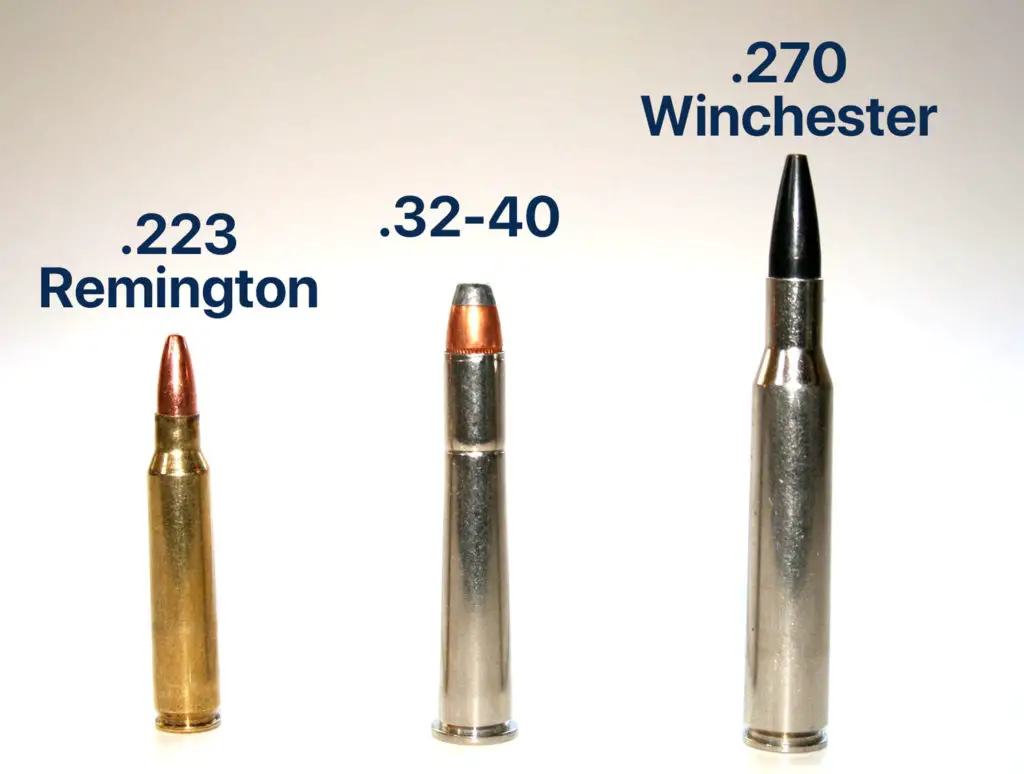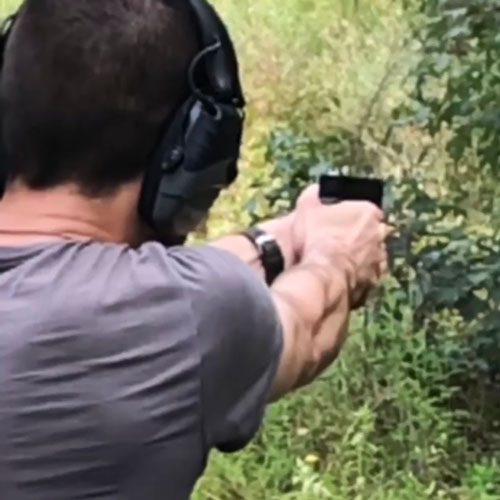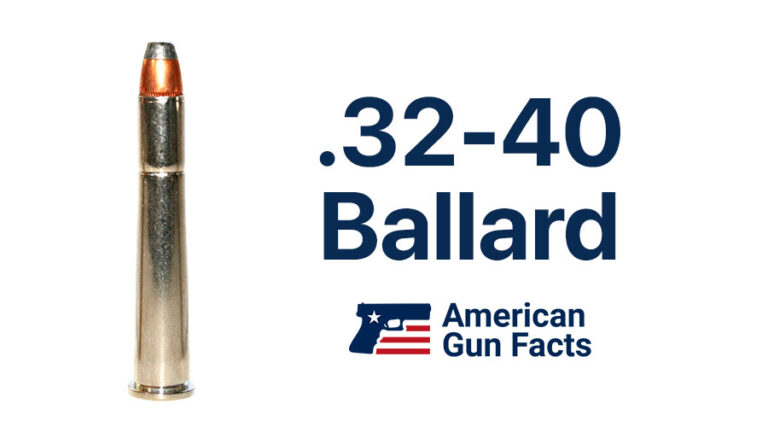The .32-40 Ballard (also called .32-40 Winchester) is a black powder cartridge designed all the way back in 1884. While most consider its heyday to be long past, plenty of others still use the .32-40 cartridge thanks to its excellent accuracy and for the nostalgia they feel with every trigger pull.
Today, let’s take a look at this unique rifle cartridge and break down what makes it so special, plus examine how you can shoot it on your next trip to the range!
Development and History
Originally designed in 1884 as a new type of chambering cartridge for Ballard’s Union Hill Nos. 8 and 9 single-shot rifles, the 32/40 was intended to be a combination cartridge for both target shooting and hunting.
Experienced shooters will be able to tell this from its original loading: back in the 1800s, the cartridge carried a 165-grain lead bullet and could be projected at speeds of between 1400 and 1500 ft./s.
That said, even in the beginning it was clear that the .32-40 Ballard left a little bit to be desired compared to other hunting cartridges. In 1884, the .38-55 and .45-70 cartridges were also on the market and provided stiff competition.
As a result, Ballard quickly adapted the .32-40’s load and equipped it with a new 165-grain jacketed soft point bullet. This was able to reach velocities of between 1800 and 1900 ft./s: a significant improvement. At that point, the .32-40 could compete with the early .32 Winchester Special.
From 1886 on, the .32-40 was available primarily for Winchester and Marlon never action rifles. It primarily saw use for hunting medium-sized game like deer, as well as smaller varmints like wolves and coyotes, at ranges of up to 300 yards or 270 m. It also saw use as a match-grade cartridge for target shooters.
Perhaps the .32-40’s most significant legacy, however, is that it was the basis for the wildcat .33-40 cartridge, the brainchild of Harry Pope. According to legend, the .32-40 was Pope’s favorite target shooting cartridge of all time.

Available Firearms
The trick with using such an ancient cartridge is that you might have difficulty slotting it into modern firearms. However, there are plenty of guns that take the .32-40 these days, although you have to know where to look!
Originally, the .32-40 was chambered for Marlin models 1881 and 1893, plus the Winchester model 1894. If you have some of these old firearms around your house or find them for sale at your local gun store, you can certainly use the .32-40 with these rifles for a blast back to the past.
Even today, you’ll primarily find Winchester and Marlin lever-action rifles chambered for the .32-40 cartridge. Technically, it’ll work with any rifle long enough that can take the cartridge’s length.
Note that you won’t be able to use the .32-40 with modern AR-15 or M4 platforms, nor will you be able to use it for handguns, submachine guns, and similar size firearms.
Cartridge Specs
The .32-40 cartridge is noteworthy for its specifications and its relatively unique size. It’s a little larger than the .223 Remington cartridge but a little smaller than the .270 Winchester cartridge. In terms of actual specs, the .32-40 breaks down like this:
| Case type | Rimmed straight |
| Bullet diameter | .320 in (8.1 mm) |
| Neck diameter | .338 in (8.6 mm) |
| Base diameter | .424 in (10.8 mm) |
| Rim diameter | .506 in (12.9 mm) |
| Rim thickness | .063 in (1.6 mm) |
| Case length | 2.13 in (54 mm) |
| Overall length | 2.59 in (66 mm) |
| Rifling twist | 1 in 16 |
| Primer type | Large rifle |
As mentioned above, the .32-40 evolved from its initial iteration to take 165-grain soft point bullets rather than lead bullets. These can usually achieve a velocity of about 1440 ft./s in modern firearms, as well as provide 760 feet per pound of energy or 1030 J.
However, you can sometimes find 155-grain lead bullets used with this cartridge. These bullets will reach velocities of 1460 ft./s and provide a little more energy as well: 786 feet per pound.
Lastly, the .32-40 is partly used because of its excellent twist rate: one turn in 16”. That’s pretty good for such an old cartridge, and it helps it maintain accuracy even in the crowded market with newer cartridges.
Primary Uses and Effective Range
As mentioned above, the .32-40 was developed as a match-grade cartridge for target shooters back in the late 1800s. With that in mind, it’s no surprise that marksmen today still find the .32-40 cartridge to be a reasonably effective cartridge for hitting targets up to 300 yards away. That’s pretty good, given the cartridge’s age and the advancements in firearm technology that have taken place.
Additionally, you can use the .32-40 cartridge for hunting. Given that there are plenty of other options available for taking down game like deer, we’d mostly recommend this for varmint hunting. Coyotes, squirrels, rabbits, and even wolves can be successfully taken down with a single bullet provided you have the accuracy needed to make such a shot.
This isn’t to say you can’t use the .32-40 cartridge for deer hunting. Historically, plenty of people did so and made out just fine. But you’ll need to be exceptionally careful to make sure that you hit a vital organ on your first shot; the .32-40’s power diminishes significantly as it gets farther away.
Bottom line: the .32-40 cartridge is best for target shooting and for hunting small to medium-sized game.
Conclusion
As you can see, the .32-40 cartridge is a classic cartridge option if you’re a marksman or firearm enthusiast who likes to check out some of the tools of the trade that you might have missed from the past. While it won’t be breaking any records for accuracy or stopping power anytime soon, the .32-40 still has a place in many Americans’ arsenals – and we don’t expect that to change anytime soon!
Fortunately, you can find the .32-40 cartridge made in new condition from a variety of manufacturers, as well as online retailers. Midway USA, for instance, sells near Winchester .32-40 cases. There may be no better time than now to pick up a box of these cartridges, load up your lever-action rifle, and take some potshots at the range just like marksmen did in the good old days.

Growing up, John loved learning about the components of firearms and what makes them work, which still intrigues him to this day. He’s a very outdoorsy person, and he loves fishing, hunting, and skeet shooting. He is a firm believer in the Second Amendment and the right to bear arms.


Excellent history lesson. I recently had CSharps build me a .32-40 smokeless rifle. Actually, it was for my wife as a 75th birthday present as well as our 55th wedding anniversary. It has a 34″ heavy barrel and double triggers. It weighs 14 pounds and is only designed as a bench shooter. I also had it equipped with a mid range Soule sight. Long story short, I am looking for some ballistic charts that show bullet drop information. Any thoughts?
Thank you for the great info. I just inherited a 32-40 from my father, which has been passed down 2 generations prior. I’m having a tough time finding ammunition for it.
While the amount of attention to the 32-40 and guns that shoot it seems on the increase Winchester factory ammo seems to be non-existant. Those with old stock are getting big bucks per round. Time for Winchester to level the playing field
I am lucky enough to own a Winchester 1894 manufactured in 1913 chambered for the 32-40. Select stock and oak leaf carved. Beautiful gun and a lot of fun to fire. I have not purchased ammo for quite sometime and certainly not since the recent shortages of ammo of any kind have started so I can not comment on availability. At one point a few years ago Winchester 32-40 were available as a result of an annual production of the cartridge. I would also scour local gun stores and find a box here and there or at least a few rounds. Do you know if Winchester is still producing rounds on that annual basis?
I have an old Winchester in this caliber. I’m going to send it to Turnbull for restoration.